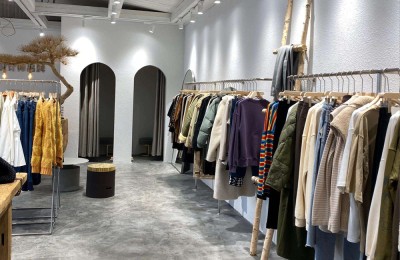Introduction to fabric antibacterial agent knowledge
With the improvement of living standards, consumers’ requirements for fabrics are no longer limited to color and style. Various functional effects have become available to meet consumer needs. Among all kinds of functional finishing, antibacterial finishing has always attracted attention from all aspects.
Antibacterial fabrics have the effect of inhibiting the growth of microorganisms. Consumers can enjoy hygiene, anti-odor, and even achieve medical and health benefits. In view of the fact that antibacterial fabrics have a killing or inhibiting effect on microorganisms, countries have special considerations for their biological safety. They usually require the antibacterial agents used to be evaluated and registered (including antibacterial performance and safety) before they are sold. This is also the reason why antibacterial finishing and other functions Organize different areas.
Common antibacterial processing methods include: antibacterial fiber, antibacterial finishing processing, etc.
Antibacterial fiber is usually obtained by adding antibacterial ingredients to the spinning solution. Therefore, it has the advantages of broad-spectrum antibacterial and long-lasting antibacterial effects. The disadvantage is that it cannot be used on popular natural fibers. Moreover, the production cycle is long and the consumption of antibacterial agents is large.
Antibacterial finishing uses antibacterial agents during printing and dyeing, so it has a wide range of applications, a short cycle, and a flexible process. With the birth of new antibacterial agents, the antibacterial effect is greatly improved in washability, and it occupies a larger market share.
Commonly used antibacterial agents include:
ØTrichlorazine phenols; can change the permeability of bacterial cell membranes and inhibit bacterial growth. Representative products such as Huntsman Textile Dyeing’s INVASAN® AM110new have good antibacterial effects and excellent washability on polyester and nylon. As a dissolvable antibacterial agent, it has little irritation to the skin and is safe and reliable. Disadvantages: It has poor high temperature tolerance and is not accepted by the Japanese market, so it is mainly used for order processing for export to Europe and the United States.
ØQuaternary ammonium salts and organosilicon quaternary ammonium salts: Their molecules are cationic and can combine with anionic microorganisms to inhibit their growth. The disadvantage is that the antibacterial effect is easily affected by the environment, especially anionic substances such as detergents that can neutralize their cationic properties and lose their antibacterial effect.
ØBiguanides: can act on the cell membrane of bacteria and change their surface properties to achieve antibacterial effects. The disadvantage is that it lacks washability.
ØInorganic antibacterial agents: Copper, silver, and zinc ions have antibacterial effects. This property has long been recognized and utilized by humans. Early antibacterial finishing agents used more copper ions. Due to restrictions on the color and lightness of fabrics and environmental protection, they are rarely used on fabrics.
Silver ion antibacterial agents achieve antibacterial effects through three ways:
·Can react with the sulfhydryl groups of proteins in bacterial cells to make them lose their biological activity
·Interfere with bacterial DNA replication and synthesis
·Change the properties of bacterial cell membranes
Because silver ions have multiple mechanisms of action, they show good inhibitory effects on various bacteria, even against drug-resistant bacteria.
Representative products include Canada’s Thomson Research Associates (TRA)’s SilpureFBR-5 silver ion antibacterial agent. In March 2007, Huntsman Textile Dyeing reached an agreement with TRA to promote silver ion antibacterial technology. TRA is a company specializing in the research, development and application of antibacterial technology. According to the agreement, it is mainly responsible for the development and technical support of antibacterial technology, the testing and evaluation of antibacterial effects, and the market promotion of silver ion antibacterial. Huntsman Textile Dyeing and Chemicals branch responsible for product supply and technical support to processing plants. This powerful alliance brings a new generation of silver ion antibacterial products to the textile antibacterial market:
SilpureFBR-5
SilpureFBR-5 is registered in major countries such as Europe, the United States, and Japan, and antibacterial fabrics processed using it can be sold with confidence. Compared with traditional silver ion products, SilpureFBR-5 has the characteristics of fine particles, uniform distribution, and good washing resistance. At the same time, the dosage is low. There is no discoloration of fabrics under the recommended dosage. It can process white and light-colored fabrics.
SilpureFBR-5 is suitable for various fiber materials (except wool fibers). The process is simple and only requires rolling-baking-baking. It can also be used for garment processing by dipping or spraying.
SilpureFBR-5 is packaged and sold in two parts. PartA and PartB are pre-mixed in a ratio of 8:92 and then prepared into the required concentration of processing fluid.
Process example:
Cotton knitted fabric
SilpureFBR-5 (mixed liquid) 20g/l
The liquid carrying rate is 75%,
Drying
Bake at 150 degrees for 1.5 minutes
The treated samples were washed at 40 degrees for 30 times and then tested according to JISL1902. The survival rate tested with K. pneumoniae was less than 0.01%, fully meeting the antibacterial and deodorizing requirements.
AAAEHRYJUTUTHYER
Disclaimer:
Disclaimer: Some of the texts, pictures, audios, and videos of some articles published on this site are from the Internet and do not represent the views of this site. The copyrights belong to the original authors. If you find that the information reproduced on this website infringes upon your rights, please contact us and we will change or delete it as soon as possible.
AA







